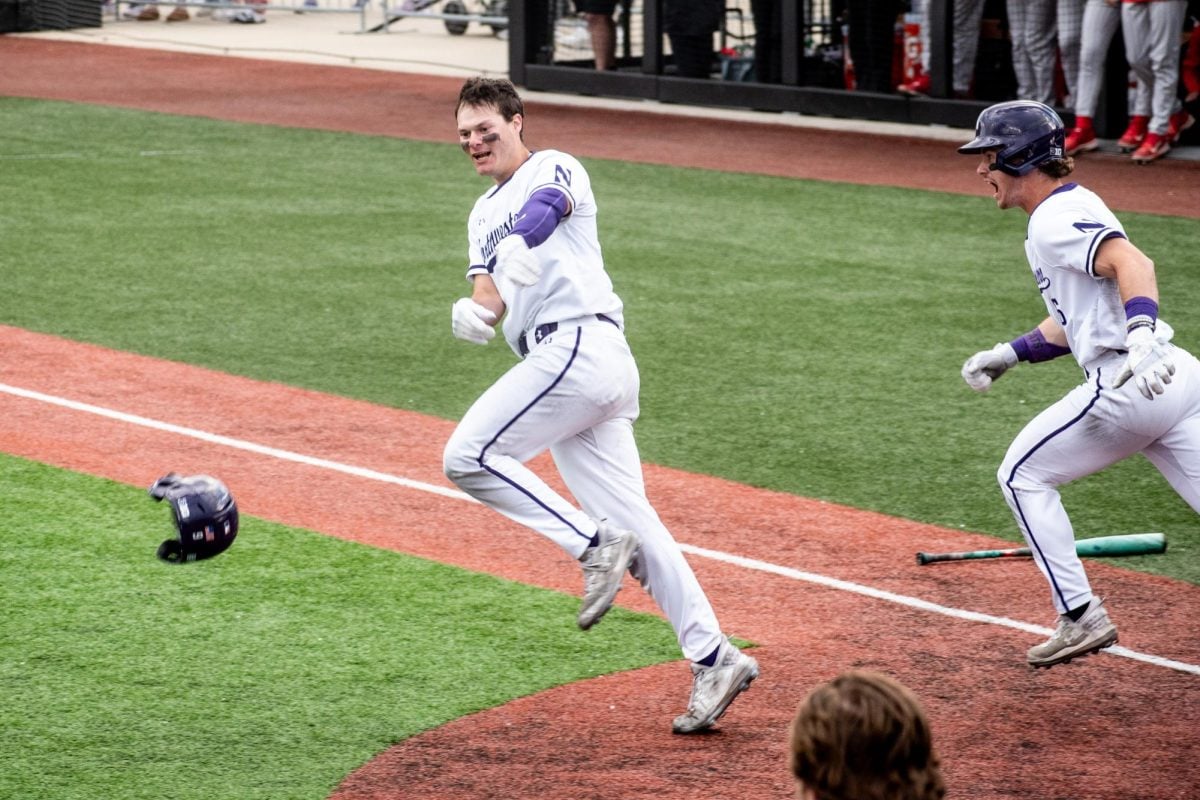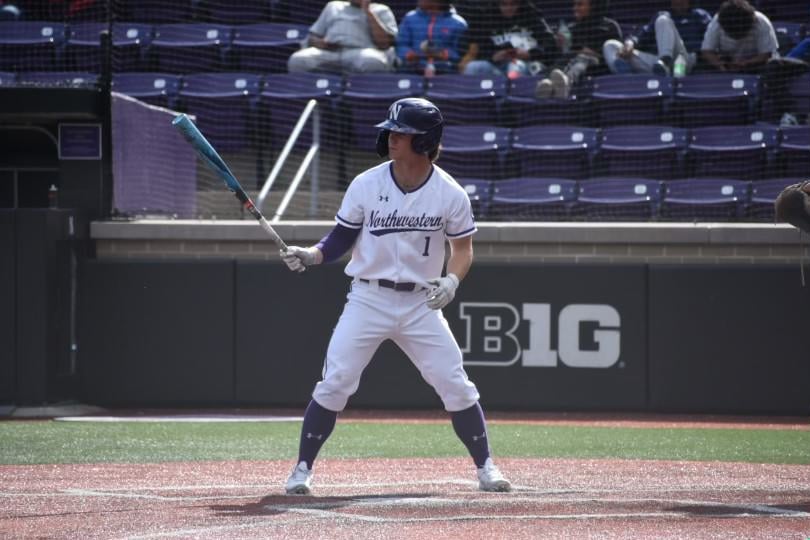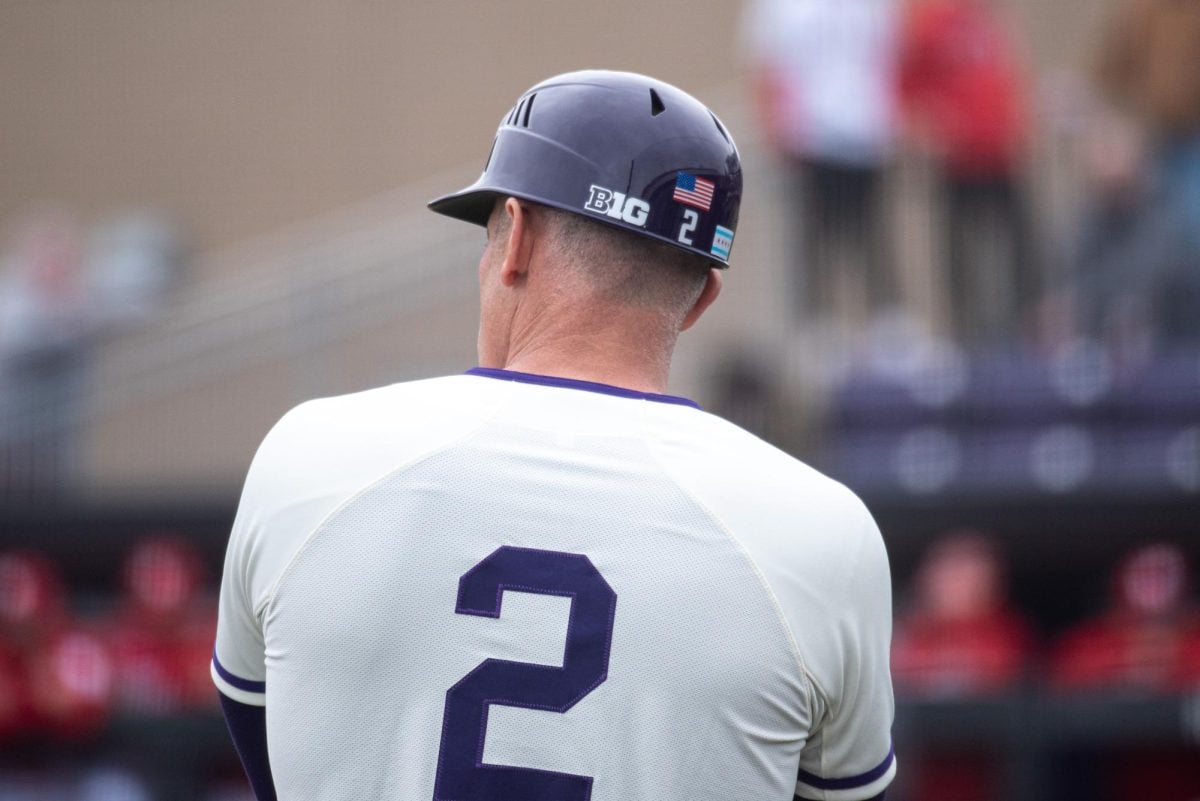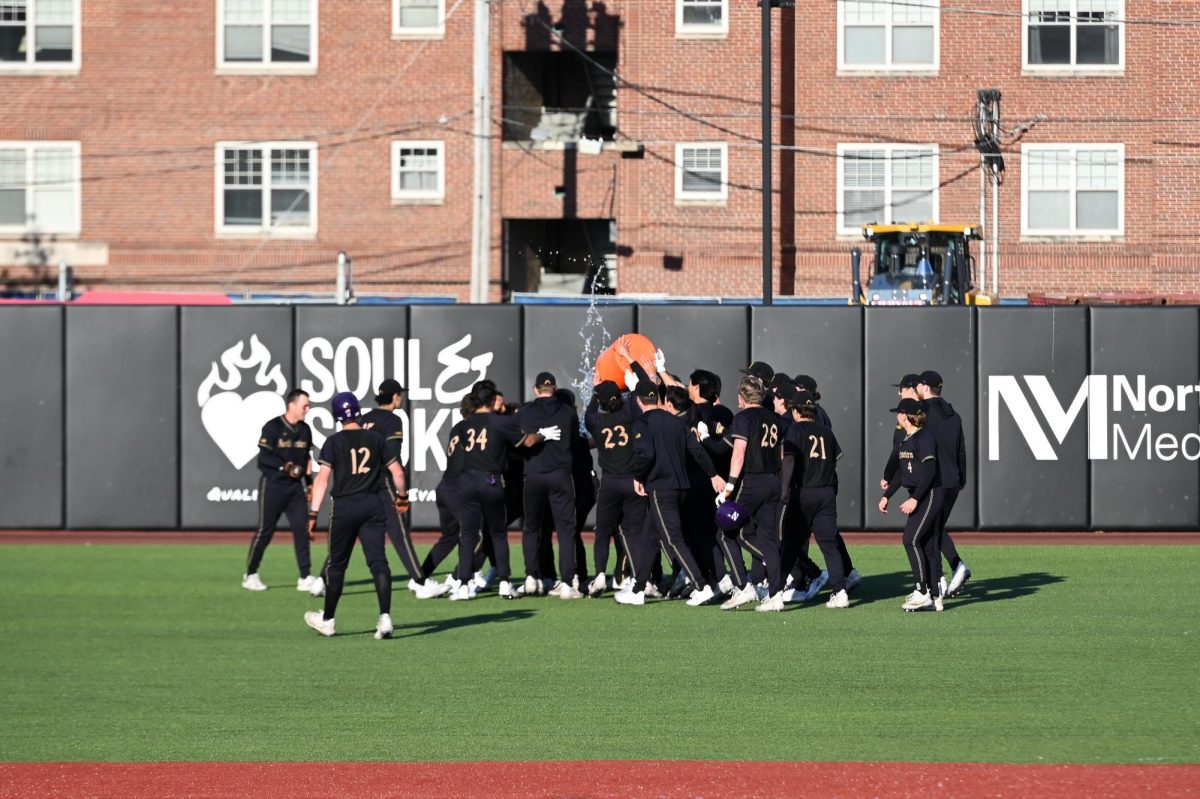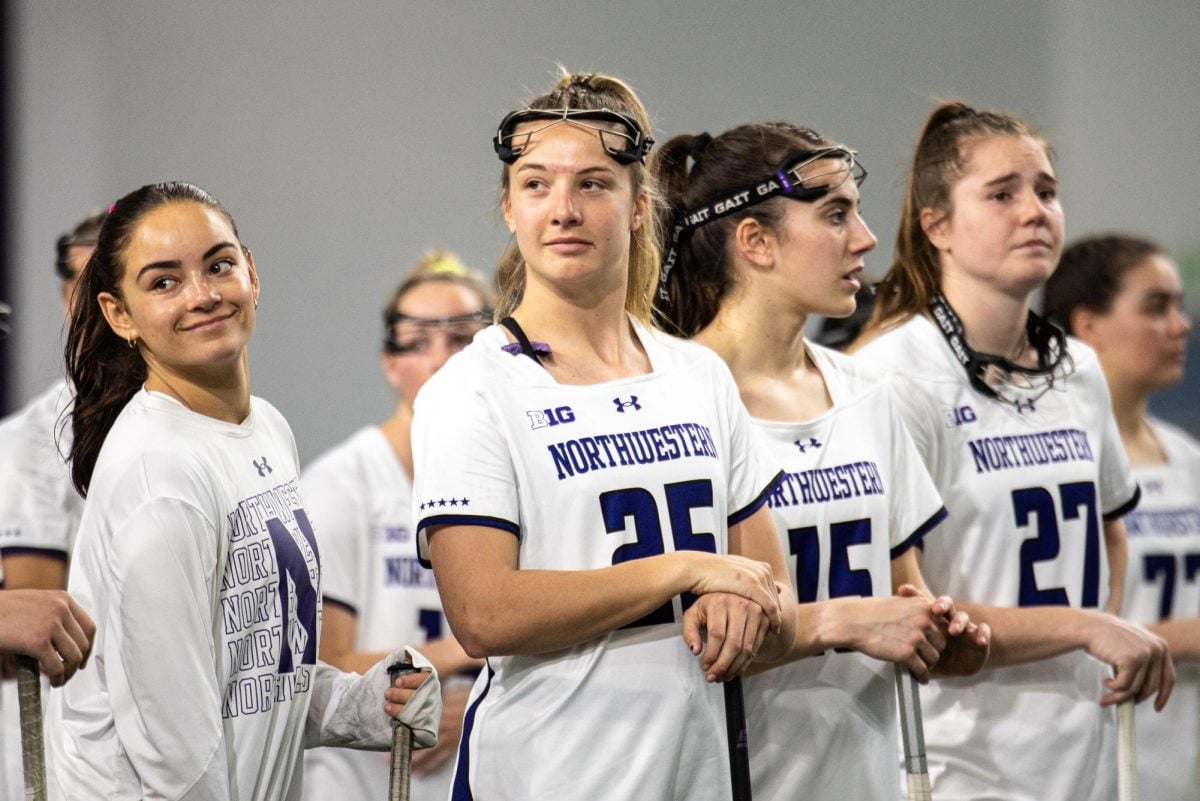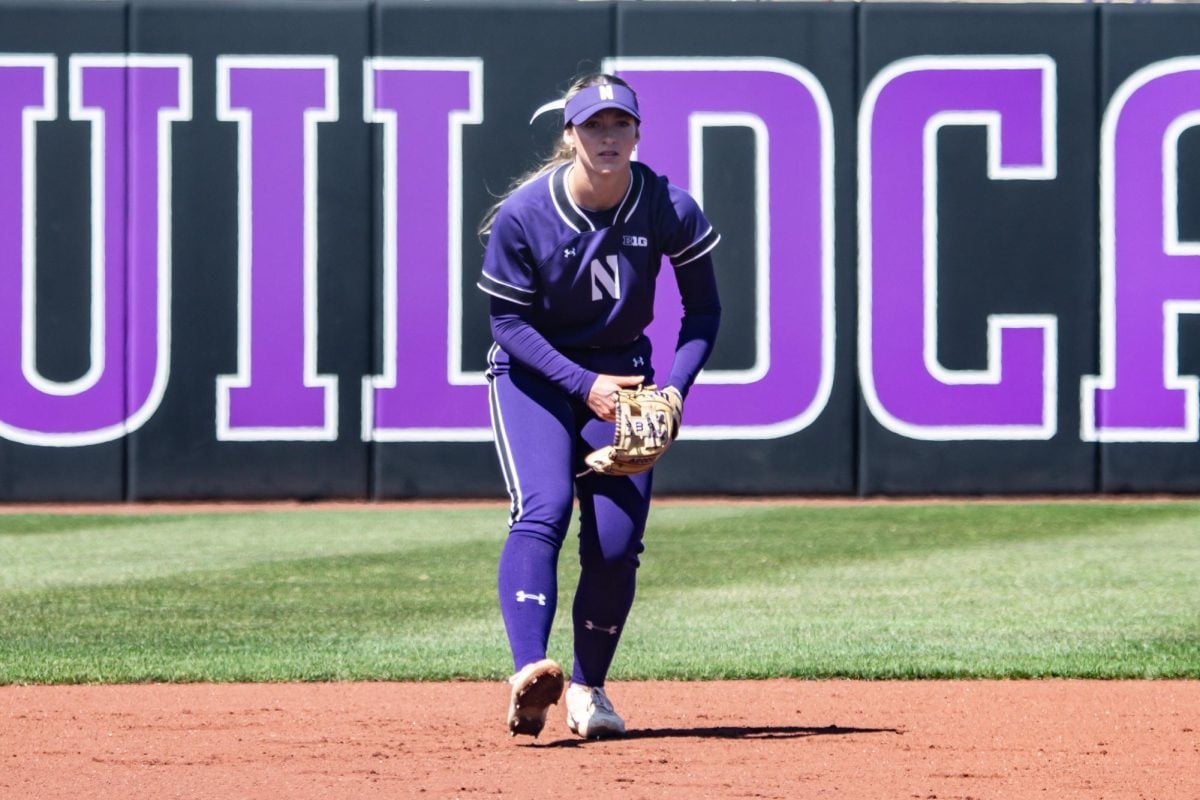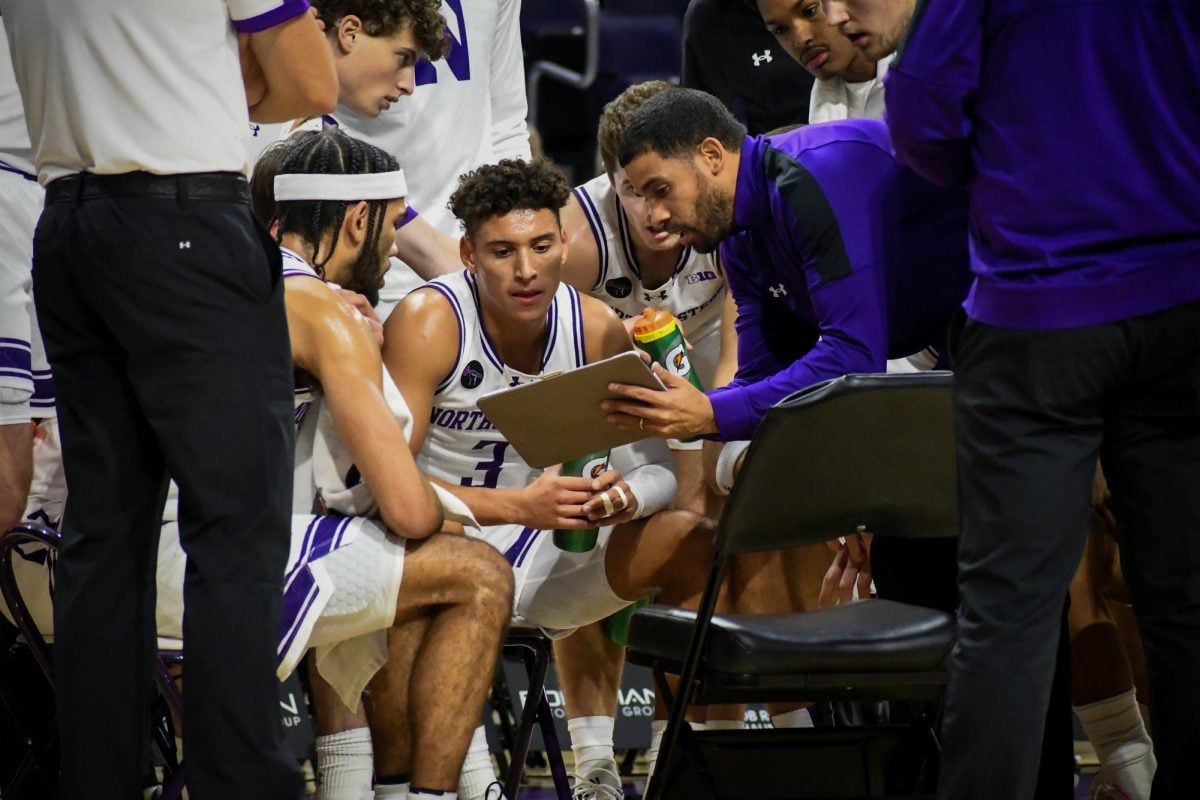An old tumor cast Luke Farrell in a new role this season.
The ace of last year’s staff for Northwestern, the junior righthander received some discouraging news over the summer when he found out that the very same tumor that had hampered him during his freshman campaign had returned.
“I had been warned because there was a portion of it left in me, but never had I expected it would come back in two years,” Farrell said. “I thought it may have been something I would have to deal with later in life but certainly not two years.”
It’s the way he has responded as much as what he has been through that has made the biggest impression on senior hurler Francis Brooke.
“He’s gone through two fights with (the tumor) and come back in great shape physically,” Brooke said. “Obviously, I have no idea what it’s like to pitch through (radiation therapy) or anything like that, but he has just been through such tough situations and the way he has handled himself has been great. It’s really impressive. He’s a great kid.”
Farrell also proved himself to be a great starting pitcher between bouts with what turned out to be a benign tumor. During his sophomore season, Farrell led the Wildcats with six wins, 13 starts, 65 strikeouts and 81 innings pitched. He ultimately finished first among the team’s starters with a 3.33 earned run average.
But the radiation therapy that followed his second set of operations took its toll on Farrell early in the 2012 campaign. A particularly horrific start against UIC emphasized the extent of his struggles. He surrendered seven earned runs on six hits and four walks in two and one-third innings of play against the Flames. Farrell wouldn’t start another game for nearly two months. For a pitcher used to winning ballgames, 2012 was quickly turning into a nightmare.
“(It was) one of the hardest things I’ve had to do, at least on a baseball field,” Farrell said. “I wanted to come back and be the same pitcher I was, the same teammate I was and take the reins of this team and try to lead us, and when you’re not performing well, it’s hard to lead. I personally try to lead by example and not to talk, and when you’re not getting things done and you’re not executing, it’s hard to do.”
For teammates who had grown accustomed to Farrell supporting them with his strong right arm, suddenly the situation was reversed.
“The biggest thing is, you just want him to know that you’re there for him,” Brooke said. “He handled it about as well as you can expect to handle it. Obviously, he wasn’t happy that he wasn’t starting on the weekends, but he really embraced his new role and he did a great job coming out of the bullpen.”
Farrell ended up making just one Big Ten start, allowing one earned run over six innings against Ohio State, but his relief work was tremendous. Following his start against the Buckeyes, Farrell made five relief apperances. In those final four innings of work, the junior surrendered just one hit and allowed only one of eight inheirited baserunners to score.
“I feel great right now,” Farrell said. “The couple times I’ve started I’ve felt like I could go deep in the ballgame and maintain my velocity but at the beginning part of the season, my body was really fatigued just due to all of the radiation. I’d say probably once the Big Ten season started or a week or two into it was when I really started to notice a change in my body and ever since I’ve felt better and better.”
Farrell’s progress hasn’t escaped his coach’s watchful eye.
“Obviously he has gone through some special things,” coach Paul Stevens said, “and when people in your family go through trials and tribulations, you go through it with them. And when you start seeing people have success, there’s nobody that’s more excited for them than the coaching staff here and their teammates.”
Farrell, who said he hadn’t done relief work since his sophomore year of high school, acknowledged that it took time to get into the routine of closing out ballgames. Over time, he came to embrace his new role, finishing with three saves.
“Closing is fun, probably one of the funnest things I have ever done,” Farrell said. “Coming in and being able to throw one inning is great. You just got to let the ball fly.”
In some ways, Farrell was meant to be a closer. His fastball sizzles in the low nineties while his breaking ball has plenty of movement. His stature – he is said to be six-feet, six-inches tall – adds another ingredient to what has become a dominant stew, allowing him to burrow in on helpless hitters.
“Obviously, he’s a real tall kid so he gets great downward movement on his fastball throwing downhill. A lot of shorter pitchers, the ball comes in more flat,” Brooke said. “He’s got a great overhand curveball and then he has a really good changeup and they’re all from the same arm slot, and it’s really hard to pick up. The ball gets on you quick because he’s so tall that he’s throwing it from five feet closer than the mound.”
Of course, what truly defines closers is their ability to pitch with the game on the line. Take Friday, which marked the Cats’ final victory of the 2012 campaign. After surrendering a hit, Farrell came back to get Alex Kelly, Saint Louis’ leading hitter, on a 90 miles per hour fastball that just barely caught the outside corner. After quickly getting ahead of Grant Nelson, he induced the Billikens’ third baseman into a fielder’s choice. With two outs, Farrell led Marco DiRoma off with a backdoor curve ball. He followed that with a 91 miles per hour fastball on the inside corner. Finally, he got DiRoma swinging on a 91 miles per hour fastball way up in the zone. The way DiRoma swung the bat, he might as well have tried to hit the ball with a magic wand.
For Farrell, however, coming in with two runners on and no outs, while holding a slim 3-0 lead, hardly compares to the stress of what he has been through.
“Being put into life-or-death situations is always going to put things in perspective,” Farrell said. “So, yeah, maybe I have a little bit of a lighter air around me when I go out to the mound. I think I’ve learned to enjoy it rather than let the pressure get to me.”


